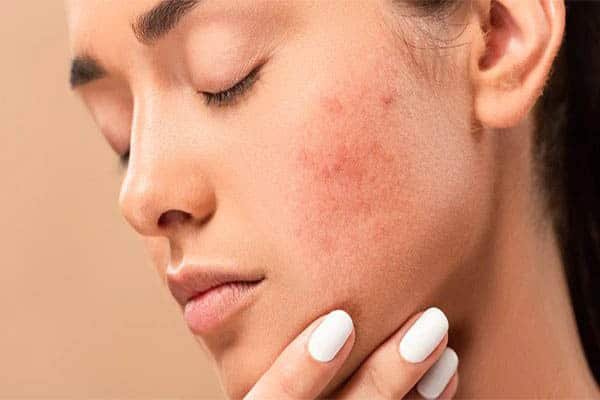Guide To Type Of Skin:- Everyone’s skin varies widely, from oily skin, dry skin and combinations thereof – there can be vast variance in how people’s skin appears and behaves.
There are countless factors that influence the appearance of your skin, from climate and cleanliness routines to cleansing methods and more, so knowing your skin type is an integral component to having healthy skin.
Different skins need different care, so identifying your individual skincare needs shouldn’t be hard at all. We will help you discover yours so that you can take better care of
Type Of Skin Guide
What Is A Skin Type?
A skin type refers to the condition of your complexion. Different kinds of skin exist depending on factors like appearance, hydration levels and oil production – although these do not indicate health status; rather they simply describe your complexion’s look and feel.
Your skin type can also change with age. At certain ages, wrinkles or pigmentation issues might become more likely. But the important thing to keep in mind is that everyone’s skin is unique – having multiple skin types is quite normal!
How can you identify your skin type? By taking an objective view. Look closely at what your skin looks and feels like. Is there a pattern? Once you understand which skin type you have, you can more effectively tailor your skincare regime.
1) Oily Skin
Oily skin is defined by an overproduction of sebum in its pores. As such, this skin type often features thicker and oilier cells than others and produces larger pores; those suffering from oily skin may have seen dark spots or scars from previous breakouts as a result.
A great way to fight excessively oily skin is through finding products that are oil-free. Search for cleansers and moisturizers labeled “non-drying” and “non-stripping.” Also avoid anything containing alcohol, as that could damage delicate skin further. Exfoliation might also contribute to excess oil production if done too frequently – trying reducing frequency may help!
If you have oily skin, you may notice and be bothered by enlarged pores. A pore strip or an exfoliating toner may help minimize their appearance while cleansing brushes and mechanical exfoliators may be too abrasive for use on your skin.

2) Dry Skin
People with dry skin typically exhibit low oil production, thin skin, and decreased sweat production from their pores. Dry skin conditions tend to occur among sensitive individuals living in cold climates as well as older individuals.
Dry skin can be frustratingly flaky, itchy, scaly, and can even appear wrinkled at the mere touch. To treat it effectively, the best approach is keeping the area hydrated by using products labeled as “moisturizing” or “hydrating,” such as those that contain ingredients like glycerin, shea butter and vitamin E.
Avoid using water that’s too hot when showering or bathing, as this can strip your skin of its natural oils and make it dry. If you have dry skin, make sure that any cleanser used on it is suitable for its delicate complexion; harsh exfoliants or chemical peel-off masks could even be too much of a harshness for its delicate needs.

3) Combination Skin
If you have combination skin, chances are there will be areas that are both oily and dry on your face. Your T-zone (forehead, nose and chin) might be oilier while other areas remain dry; many people with combination skin may even have some blemishes or blackheads on their nose and forehead that need attention.
If you have combination skin, it’s essential that your skincare regime strike a balance between hydration and oil control. Look for products labeled “oil-free” or “non-pore clogging.” Avoid harsh products; gentle is best! To further care for your complexion if possible. Additionally, toner may help cleanse away impurities that clog your pores.

4) Normal Skin
Normal Skin (Non-Oily or Dry) Normal skin falls somewhere in between oily and dry, creating the “golden middle.” Having normal skin can mean experiencing less redness and irritation as well as less visible pores than those with other types of skin. If this describes you, normal may be just what’s needed!
When caring for normal skin, look for products with gentle ingredients and no harsh components that contain alcohol or are too abrasive – these may be more suitable. Remember that sensitive skin types may require different products.
Attentiveness to skin care routine is of utmost importance; excessive heat or UV exposure could damage your skin.

5) Acne-prone skin
When caring for acne-prone skin, extra special consideration needs to be paid when selecting skincare products and procedures. Although acne cannot be completely cured, its presence can still be managed using suitable products like exfoliating once every two weeks and avoiding products containing menthol and oils.
Keep your skincare regimen lightweight by choosing lightweight serums instead. Be mindful that what works for someone may not work as effectively for you, since skin is unique. Keep a log of what products and ingredients you’re using on your skin so you’ll know which work and which don’t. Keeping an open mind will also help; keep track of which worked and didn’t for each person and their personal circumstances may differ – remember what works for one may not for another!
Also refer:- Best 6 Dry Acne Prone Skincare Routine For You
Conclusion
Different skin types have various needs. It’s essential that you identify what kind of skin type you have so you know which products to use on it. If you don’t know yours yet, don’t fret; take our quiz! If it helps.
Assessing your complexion and consulting a dermatologist if necessary will allow you to quickly determine your skin type. Once you do, tailoring a skincare regime specifically tailored for you can lead to healthier, more consistent skin.

